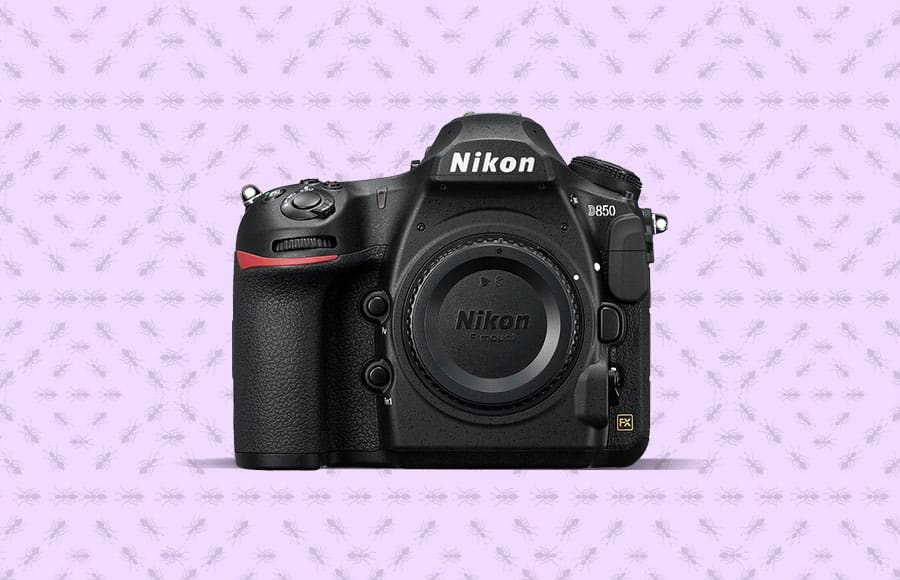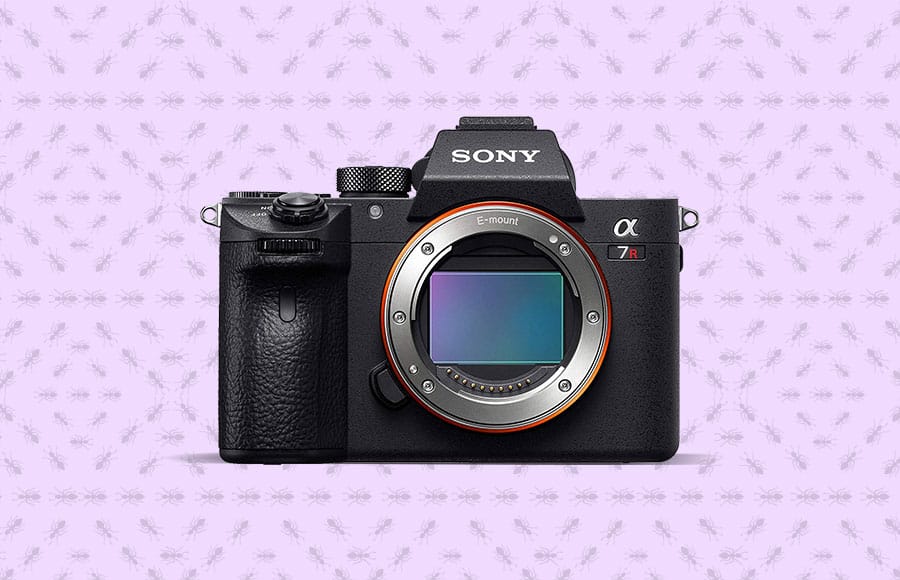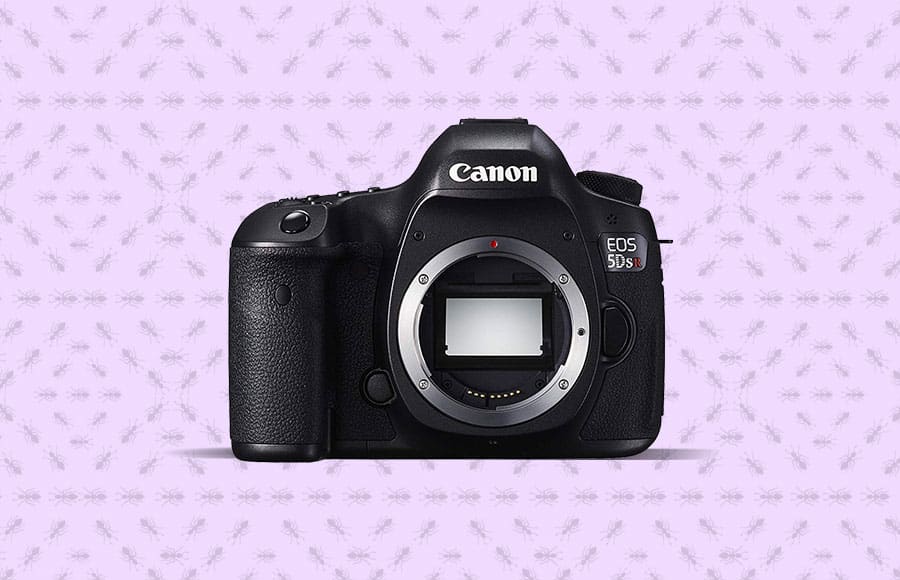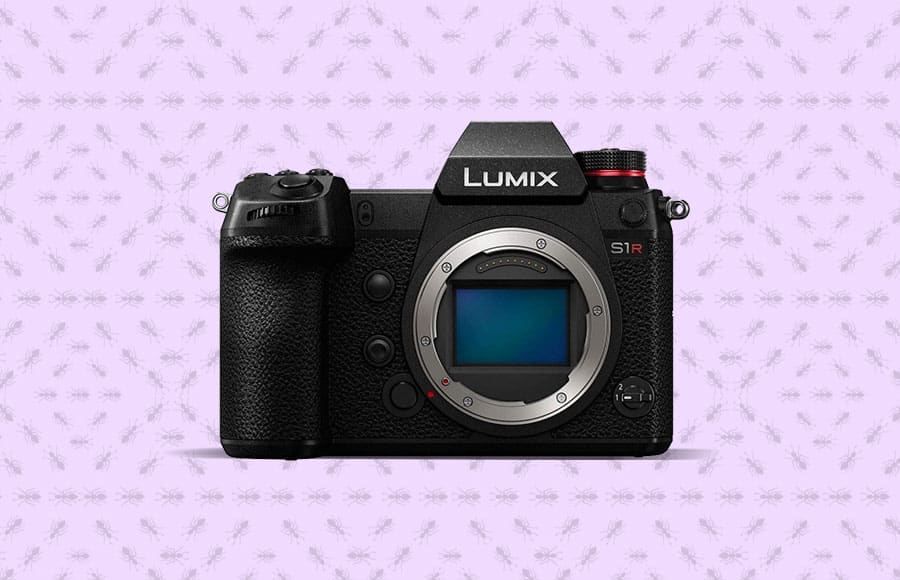
Best Camera for Macro Photography
Interested in taking close up photos of tiny things?! This guide to the best camera for macro photography will help you get up close an personal.
Interested in taking photos of tiny things?! This guide to the best camera for macro photography may be just what you need!
When done right, macro photos can be truly mesmerizing. Seeing tiny intricacies up close is like a portal into another universe.
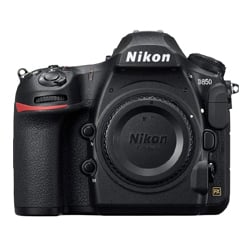
Capture the tiniest of details in ultra-high quality with this impressive 45.7 megapixel sensor.
Macro photography isn’t easy – you need the right camera, the right lighting, the right lenses, and the knowledge of how to use all of them together!
Some compact cameras have a dedicated ‘macro mode’, while most DSLRs are high-end mirrorless cameras do not – you need to invest in macro lenses with close-focusing abilities.
Whether you’re a professional macro photographer shooting in a studio, or just a hobbyist out in your backyard, investing in the right camera for the job is the first step.
Here are the best cameras for macro photography, ranked in order.
Table of Contents
What is the Best Camera for Macro Photography in 2023?
| Image | Product | Features | |
|---|---|---|---|
 | Nikon D850BEST ALLROUND |
| View Price → |
 | Sony A7R IVHIGHLY RECOMMENDED |
| View Price → |
 | Canon EOS 5DS RHIGHLY RECOMMENDED |
| View Price → |
 | Panasonic Lumix DC-S1RHIGHEST RESOLUTION |
| View Price → |
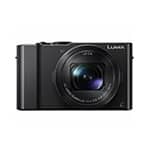 | Panasonic Lumix DMC-LX10/LX15BEST COMPACT |
| View Price → |
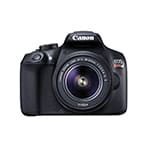 | Canon Rebel T6GREAT VALUE |
| View Price → |
1. Nikon D850
Sensor: Full-Frame | Resolution: 45.7MP | Monitor: 3.2-inch tilt-angle touchscreen, 2.359K dots | Autofocus: 153-points | Max frame rate: 9fps | Video: 4K at 30p | Weight: 915g (2.01 lb)
- High ISO performance
- Very quick startup
- Excellent dynamic range
- Very fast AF speed
- No built-in flash
- No AF illuminator
If you prefer a DLSR style of body and want the best camera for macro photography, you can’t get much better than the Nikon D850.
This stellar pro-level body is an incredible performer and will not let you down when hunting for your favourite creepy-crawly.
The D850 sports a massive 45.7-megapixel sensor to ensure that you can gain incredible image quality packed full of details. Having this capacity will guarantee that if you’re shooting 1:1 or 5:1 macro, you’ll have an exceptional level of detail down to the finest follicle.
True to Nikon’s heritage, this is a full package camera with all the necessary features for any photographic genre. The body has a very organic aesthetic thanks to the use of complex curves versus hard edges.
Beyond that, you have full access to all of your necessary control dials, buttons and terminal ports.
The Nikon has a fantastic grip with buttons in positions that provide natural reach. It isn’t overly heavy, however shooting handheld for a long period of time will cause fatigue.
When paired with a macro lens, the total kit weight is likely to reach 1kg so the use of a tripod is going to be necessary.
With a brand such as Nikon, you have access to a large range of lenses including several macro lenses. Nikon has developed high-quality lenses with varying focal distances to suit any need.
Further to this, many third-party manufacturers have developed outstanding lenses available for use with this camera.
Being a true DSLR, the D850 utilises an Optical View Finder, or OVF. This allows for an accurate real-life view plus it provides a 0.75x magnification making it perfect for framing even the tiniest of subjects.
It also features a large and highly detailed rear touch screen that can be used to check your images or use the Nikon Live View and shoot from the rear screen rather than the OVF.
These features allow you to both focus and shoot from the touch screen giving you more working space.
The D850 is amazing value for money and sits around the medium price range.
If you’re looking for a fully-featured camera that will be perfect for macro photography, this Nikon will deliver beyond expectations.
2. Sony A7R IV
Sensor: Full-frame | Resolution: 61MP | Viewfinder: 5,760K dots | Monitor: 3-inch tilt-angle touchscreen, 1,400K dots | Autofocus: 567 Phase + 425 Contrast | Max frame rate: 10fps | Video: 4K at 30p | Weight: 665 g / 1lb 7.5oz
- Fast autofocus
- Fantastic image quality
- Generous buffer depths
- Very low shutter lag
- Limited touchscreen functionality
- Confusing menu system
The Sony A7R IV is a megapixel beast thanks to its 61-megapixel sensor and incredibly capable processor. This mirrorless camera will guarantee your macro images are stellar and will amaze your friends and family.
The reason that this is one of the best cameras for macro photography (and micro photography) is due to its ability to deliver incredible image resolution and quality. The RAW files from this beast are packed with incredible levels of detail.
(If you can’t afford this flagship camera, but still require tons of detail in your macro photos, see: how to increase the resolution of an image.)
The Sony A7R IV has a very clean and neat design quality with square edges and less complex curves. The grip is incredibly comfortable and allows the necessary control dials and buttons to be easily accessed one-handed.
While it’s heavier than other bodies in this guide, it’s still quite comfortable to handhold and shoot with. It’s also worth keeping in mind that with macro photography, the use of a reliable and sturdy tripod is always recommended.
Fortunately, there’s a wide range of lenses available for the most extreme macro photographer to get their hands on. Both Sony and third-party manufacturers offer a comprehensive range of macro lenses suited to a variety of scenarios.
Being a mirrorless camera, the Sony A7R IV features an Electronic View Finder (or EVF). This magnified viewfinder is fitter with a 5.76 million dot display providing an incredible life-like reproduction of the composition.
Further to this, the Sony has a 1.44 million dot rear touch LCD. While the response time of the touch screen can be a little laggy, you are getting incredible reproduction detail of your best images.
Without a doubt, Sony has one of the best autofocusing systems in the industry. With lightning-quick autofocus, as well as face and eye detect that can capture animals, your macro subjects don’t stand a chance of escaping.
One of the drawbacks with the A7R IV, and most Sony cameras for that matter, is the complex menu system. It doesn’t offer a very user-friendly nor natural flow of options.
However, once you’ve set up your camera including custom buttons, you’ll rarely have to dive into the menus.
The Sony A7R IV is one of the most expensive cameras in this range. However, exceptional quality and the sheer volume of detail in your macro photos are well worth the asking price.
At the end of the day, if you’re going to take macro photography or any other genre seriously, then you are going to need a camera that can make the magic happen.
With a large range of lenses available, quick autofocus and the ability to capture insane amounts of image detail, the Sony A7R IV is hard to say no to.
3. Canon EOS 5DS R
Sensor: Full-Frame | Resolution: 50.6MP | Monitor: 3.2inch touchscreen, 1.040K dots | Autofocus: 61-points | Max frame rate: 5fps | Video: 4K at 30p | Weight: 845g (1.85 lb)
- Solid build quality
- Highest resolution in class
- Very deep color versatility
- Excellent ergonomics
- Easy to navigate menu
- No WiFi, GPS, NFC or DPAF
- Noisy
- Huge file sizes
Canon is a household name when it comes to cameras and the Canon EOS 5DS R is an excellent addition to the best camera for macro photography line-up.
This full-frame camera packs a whopping 50.6-megapixel image sensor and when combined with the Canon Digic processor it creates exceptional image quality.
If you’re looking at a high-end DLSR body with high image resolution for your macro photography, then this is the one you need.
The 5DS R is a great-looking and well-designed camera with a proven blend of ergonomics for user comfort and sensible placement of controls. It features a truly deep grip making hand-held shooting a breeze.
While not a light camera, it is incredibly comfortable to use, and when paired with a lens it has a hefty but assuring weight.
Speaking of lenses, there is an extensive range of Canon macro lenses made by both Canon and third-party companies. Canon even offers a whopping 180mm f/3.5 macro lens which gives you incredible detail and working distances.
The 5DS R delivers exceptional image quality thanks to its brilliant optics, processor and of course that giant sensor. Images of your tiniest subjects will be packed full of brilliant detail and excellent contrast.
Thanks to a large and magnified Optical Viewfinder (OVF), you have an incredible real-life view of your subjects. And with a 1:1 ratio macro lens, you will be staring right into their beady little eyes.
The Canon 5DS R features a big, beautiful 3.2-inch screen with a respectable 1.44 million dot resolution. Unfortunately, though, it’s not a touch screen.
While the autofocus performance on the Canon is not the leader in class, it’s still fast and accurate thanks to a 61 point focusing system that will stick to its subjects with tracking. This is great for macro photography especially when you’re trying to capture a fast little critter.
The menu system on the 5DS R is very streamlined and easy to navigate with smart choices for the placement of common functions.
In terms of value, the Canon sits around midway between the Sony and Nikon entries in this guide. For that money, you’re getting an incredibly capable camera that can easily tackle all your macro photography needs.
Further to that, you have access to a broad range of highly capable Canon and third-party lenses that will ensure you’re capturing the highest quality images every time.
4. Panasonic Lumix DC-S1R
Sensor: Full Frame | Resolution: 47.3 MP | Viewfinder: 5.7K dots | Monitor: 3.2-inch tilt-angle touchscreen,2.1K dots | Max frame rate: 9fps | Video: 4K at 60p | Weight: 898g / 1.98 lb
- Dual card slots
- Illuminated rear buttons
- High resolution sensor shift mode
- Dual-direction tilting rear LCD
- Large, substantial grip
- Expensive
- Large and heavy
- Complex operation
The Panasonic Lumix DC-S1R is an incredible and reliable camera for macro photography for both the pro and the enthusiast. It’s clear why this is one of the best cameras for macro photography.
The body is made tough and includes dust and splash sealing as well as being resistant to extreme cold. This kind of durability is especially welcome when you’re out in the field facing all kinds of elements.
The design and build of the DC-S1R are incredible, with a huge and deep handgrip for greater purchase when shooting handheld. Further to this, a sensible button and dial layout make photography with this camera a joy in any conditions.
In addition to this, the overall size and weight of the camera are well balanced, and whilst it’s one of the heavier cameras in this range, it’s still comfortable to carry. Again, it’s worth keeping in mind that when shooting macro photography you ideally want your camera mounted to a tripod.
Despite its weight, this Lumix features incredible image stabilisation which will remove any unwanted camera shake when shooting at slower shutter speeds.
In terms of optics, the DC-S1R features an incredible 3.2-inch tilting touch screen with a staggering 2.12K dot resolution. That is without a doubt one of the best in class and will provide you with exceptional levels of detail.
In addition, the Electronic Viewfinder, or EVF, offers a respectable 5.7K dots of resolution ensuring that your view is as near to true to life as possible. This is especially important when shooting macro as you really need to ensure that your subject is in full crisp focus.
While there isn’t a wide range of macro-specific lenses available for this camera as yet, there is an amazing third party lens developed by Sigma and Leica. Both are well-known brands for high-quality lenses.
Thanks to a combination of the huge sensor, image stabilisation and exceptional value for money, it’s clear that this is a great entry-level product for someone looking at macro photography cameras.
As a side note, of all the cameras in this round-up, the Lumix DC-S1R also features one of the best 4K video outputs. If you’re looking for a macro camera that you can employ in other photographic genres, this camera may just be for you.
5. Panasonic Lumix DMC-LX10/LX15
Sensor: MOS Sensor | Resolution: 20.1MP | Monitor: 3-inch tilt-angle touchscreen, 1.04K dots | Max frame rate: 50fps | Video: 4K at 30p | Weight: 310 g (0.68 lb)
- Excellent still image quality
- Excellent touch interface
- Fast & responsive
- Small, durable size
- Excellent color rendering
- Fast focus and capture speed
- Mediocre battery life
- No electronic viewfinder
- Unable to edit RAW in Lightroom
If you’re not interested in carrying around a large full-frame DSLR or mirrorless camera, then the Lumix DMC-LX10/LX15 could be considered the best camera for macro photography.
This lightweight and neat little camera is almost pocketable and makes for a great weekender camera when you’re out and about in nature.
Despite its size, the LX10 is a robust and rugged camera perfect for travel.
The image sensor, regardless of its size compared to the larger bodies in this guide, produces amazing bright and crisp images with great resolution.
The camera is truly palm-sized yet is ergonomically well designed to ensure that there is ample room for grip at the front and the rear. What’s more, the rear touch screen is bright and crisp with great resolution and can be tilted to make shooting down low so much easier.
The Lumix LX10 also features an incredibly clever macro mode function ideal for macro photography.
In many instances, macro photography results in an incredibly narrow depth of field. This will mean that your subject will only have a small amount in focus while the out of focus drop off will be extreme.
To combat this, many macro photographers choose to take multiple photos of the subject and move focus back ever so slightly each shot. This way they can merge those images back at home in post-production to create an image where the subject is all in focus.
The Lumix LX10 has a very clever macro mode feature to accommodate this without the need for tricky manual focusing or focus stacking in Lightroom – it has a feature known as Post Focus that allows you to capture many images and be able to stack them in-camera.
Further to this, the camera will take a burst of images and capture the same image many times with each image having a different element in focus.
You can then use the touch screen to choose which elements you want to be in focus over others.
Another brilliant feature is the 4K Photo Mode where you can capture a burst of photos just as if you were shooting in 4K video mode. You’re then able to review all the images captured during the 30-fps burst and select individual images to be kept.
The Lumix LX 10 features a Leica designed 24-72mm zoom lens with a minimum aperture of f/1.4 making this a very versatile lens that is brilliant in low light situations.
The other benefit of having a built-in zoom lens is that there’s no need for a bag of heavy lenses to carry with you.
Given that this is an ideal entry-level digital camera solution for macro photography you would expect the value to be proportionate.
At just under $500 (see latest price here) for a camera that is compact, features amazing high-quality image output and has an incredibly versatile zoom lens, this is exceptional value for money.
If you can see yourself getting involved in macro photography but don’t want to blow the budget just yet, the Lumix LX10 is the best camera for macro photography for you.
Plus, this camera is such a great little performer that you can use it as a daily carry or even a travel camera.
6. Canon Rebel T6
Sensor: APSC | Resolution: 18MP | Monitor: 3-inch screen, 920K dots | Autofocus: 9-points | Max frame rate: 3fps | Video: 1080 at 24p | Weight: 485g (1.06 lb)
- Excellant photo quality
- Raw capture support
- In-camera Wi-Fi
- Crisp rear LCD
- Fixed non-touch-screen
- Slow for a family camera
Whilst we have already included a full-frame Canon camera in this guide, it’s important to also be aware of simpler and more cost-effective solutions. This way you have a broad range of options for the best camera for macro photography.
The Canon Rebel T6 features a smaller but still incredibly impressive 18-megapixel sensor that is a cropped sensor compared to the full-frame models. Regardless, the image quality produced by this camera is great and able to capture a wonderful amount of detail.
The Rebel T6, known as the 1300D in other regions, has a very familiar design to most other Canon bodies and has a suitable deep grip to ensure a solid hold. Button placement on the rear of the camera is a little haphazard, but once you become familiar with the layout you’ll be in full control.
The camera is relatively light for its size, and when paired with a simpler kit lens makes for a comfortable and well-balanced combination.
The Optical Viewfinder, or OVF, has a suitable magnification range, and while the touch screen is not the best in class is has a good amount of resolution. Being able to check your images for focus detail and sharpness will still be achievable with this screen.
In terms of effectiveness in the field, the T6 has solid autofocus with only minimal evidence of focus hunting, especially in low light. Fortunately, you can mount it on a tripod and reduce shutter speed to effectively control your end exposure.
What’s more is that the focusing system is good enough to stick to a subject while you take single or multiple shots of your favourite bug or tiny model.
Canon has a fantastic range of lenses available to its APS-C camera range and that opens up a lot of options for users of the Rebel T6. Lenses range from simpler entry-level to much higher specification lenses.
When it comes to value for money, this is the cheapest camera in this guide and opens up macro photography to a very broad audience.
The Canon EOS Rebel T6 makes for the perfect DSLR camera for entry-level photographers new to macro photography. Its simplicity makes this a perfect camera to learn from and increase overall knowledge of photography.
What is the Best Setup for Macro Photography?
The best setup for macro photography largely depends on the subject matter and the conditions you’re shooting in, but a typical setup might include:
- Camera: Any DSLR or mirrorless camera should work fine. There aren’t really
- Lens: A dedicated macro lens with a focal length between 90mm and 105mm is generally a good choice. This gives you some working distance from your subject, which can be important if you’re photographing insects or other creatures that might be scared away if you get too close.
- Tripod: A tripod can be incredibly useful in macro photography. Because you’re working at such close distances, even tiny movements can dramatically affect your focus. A sturdy tripod can help eliminate camera shake and improve the sharpness of your photos.
- Lighting: Good lighting is crucial in macro photography. An external flash unit or LED light can help illuminate your subject. Diffusers or reflectors can also help to soften the light and reduce harsh shadows.
- Accessories: Depending on your specific needs, you might also want to consider extension tubes (which increase the magnification of your lens), focus rails (which allow you to adjust your camera’s position in small increments for precise focus), or a clamp (a device that holds both the subject and diffusers/reflectors).
Can You Use a Regular Lens for Macro Photography?
Yes, you can use a regular lens for macro photography, but there are a few limitations and considerations:
- Focusing Distance: Regular lenses have a longer minimum focusing distance than macro lenses, which means you can’t get as close to your subject. This can make it challenging to fill the frame with small subjects.
- Magnification Ratio: Regular lenses typically don’t provide a 1:1 magnification ratio, which is a defining characteristic of macro photography. The magnification ratio tells you how the size of the subject is projected onto the camera’s sensor relative to its actual size. A 1:1 magnification ratio means the subject is projected onto the sensor at its actual size. Most regular lenses have a magnification ratio of less than 1:1.
- Image Quality: Macro lenses are designed to retain sharpness at very close focusing distances, while regular lenses might not perform as well under these conditions.
Despite these limitations, there are a few methods that allow you to do macro photography with regular lenses:
- Extension Tubes: These are hollow tubes that you place between your camera body and your lens. They allow your lens to focus at closer distances than it usually would, increasing its magnification. They do not contain any optical elements, so they don’t degrade image quality, but they can reduce the amount of light that reaches the sensor.
- Close-Up Lenses: Also known as diopters, these are essentially magnifying glasses that you can attach to the front of your lens. They decrease your lens’s minimum focusing distance, allowing you to get closer to your subject.
- Reversing Rings: These allow you to mount your lens backwards onto your camera, turning it into a macro lens. However, this method can expose your lens and camera sensor to dust and scratches.
- Lens Coupling: This involves attaching two lenses front-to-front, usually with a coupling ring. The lens attached to the camera functions normally, while the other lens magnifies the image. This is a less commonly used method but can be effective for macro photography.
While all these methods can help you achieve macro-like effects, dedicated macro lenses still offer the best quality and easiest experience for macro photography.
Frequently Asked Questions
Do you need a special camera for macro photography?
Although this article is entitled The ‘best camera for macro photography’, you don’t necessarily need a special camera for macro photography. However, there are certain lenses designed specifically for this kind of photography, known as macro lenses.
These lenses allow you to get very close to your subject while maintaining focus, a feature regular lenses often struggle with.
They also provide a 1:1 magnification ratio, meaning the size of the subject in real life is the same size as it’s reproduced on the camera sensor.
Most DSLR and mirrorless cameras are compatible with macro lenses. Compact digital cameras sometimes have a macro mode, though they might not provide the same image quality.
Which mobile camera is best for macro photography?
Many high-end smartphones come with pretty decent cameras for macro photography. Here are a few examples:
- iPhone 12/13/14 Pro Max: These iPhones have a great camera system, and while iPhones don’t have a dedicated macro lens, they do well in close-up situations, especially if you learn some iPhone macro photography tips.
- Samsung Galaxy S21 Ultra: This phone features a dedicated 12MP macro sensor that allows you to get very close to your subject.
- OnePlus 9 Pro: The OnePlus 9 Pro has a good macro mode that lets you take close-up shots.
Remember, if your phone’s built-in camera doesn’t offer a macro mode, you can purchase macro lenses like those from Moment or Olloclip that attach to your smartphone.
These can be a cost-effective way to experiment with macro photography without investing in a DSLR or mirrorless camera and lenses.
What is the best camera for close up shots?
If you want to take extremely close-up shots – which is also known as macro photography – it helps to have a high-quality camera. We’d recommend something like the Nikon D850: it offers an impressive resolution of 45.7 megapixels, fast autofocus, and an outstanding dynamic range, allowing for impressive images even at a very close range.
What is the best Canon camera for macro photography?
If you’re after a Canon camera for shooting macro, it’s hard to go past the Canon EOS 5DS R, which has a 50.6 megapixel full-frame CMOS for ultra-high resolution images. The Canon Rebel T6 also makes it onto our list of the best cameras for macro photography for those just starting out.
What is macro photography used for?
Macro photography is used for capturing close-up images of tiny details that often go unseen by the naked eye. You’ve probably seen extreme close-ups of things like insects, flower petals or drops of water – those are all examples of macro photography.
What is the best aperture for macro photography?
With macro photography, you generally want a fairly narrow depth of field (for example, between f/5 and f/12). The reason for this is that you want all of the tiny details to be sharp and in focus. That said, it also depends a lot on the subject, how close you are, and other factors like the lighting situation.





